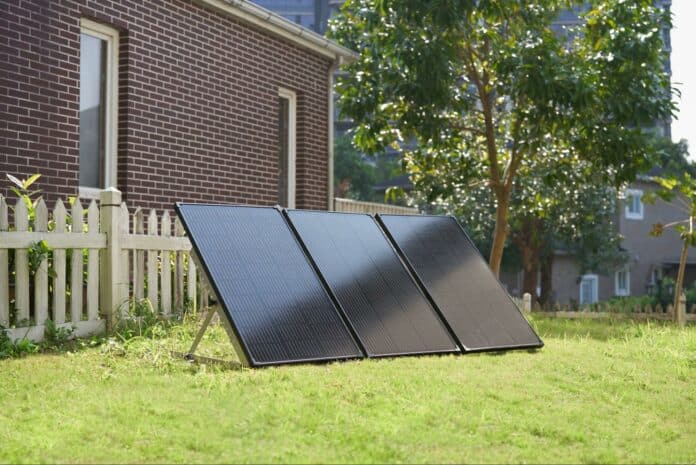The cost of solar panels has come down significantly in recent years. Often, the cost of installing a large permanent solar array can outweigh the cost of the panels themselves.
Your overall expenses will vary based on local labor and materials costs and also the size of solar power system you require to meet your energy consumption needs.
Examining the average costs of purchasing and installing a residential solar power system is a valuable starting point when considering a switch to solar.
Just remember that your actual costs are dependent on numerous factors, including where you live and your electricity consumption needs.
With that in mind, let’s look at how much solar panels cost in 2024.
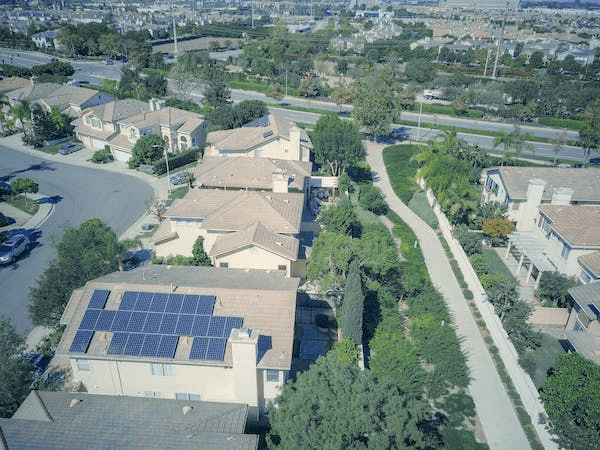
Average Cost of Solar Panels in 2024
An average home solar power solution in the US — including solar panels, balance of system, and installation — costs about $20,000 in 2024.
How much your residential solar power solution will cost can vary significantly depending on where you live and how much electricity you need the system to generate. It might cost you as little as $5,000 or as much as $50,000.
That is before applying any federal, state, or local tax rebates and incentives, including the Federal Solar Tax Credit, under which you can recoup up to 30% of your equipment and installation costs for switching to solar.
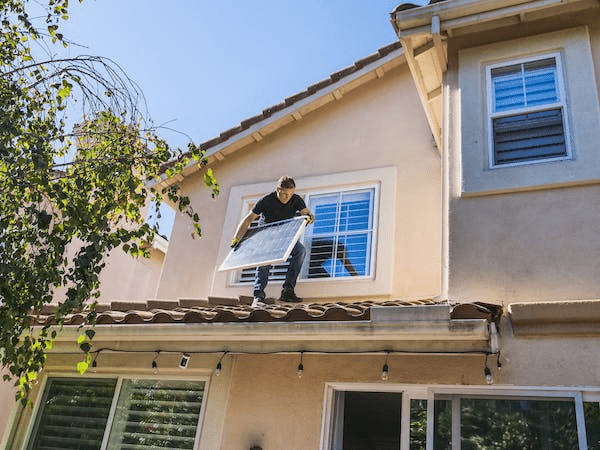
How Much Does a Solar Panel System Cost?
Any average cost figures serve only as an estimate. That said, the following table provides average costs by state for a 6kW and 10kW system, along with the tax credit you would receive for the average 10kW system and a per-watt average.
Cost of Solar Panels by State
| State | Average Solar Panel System Cost: 6 kW | Average Solar Panel System Cost: 10 kW | 2024 Federal Tax Credit Value (10 kW System) | Average Cost Per Watt ($/W) |
| Alabama | $14,700 | $24,500 | $7,350 | $2.45 |
| Alaska | $14,460 | $24,100 | $7,230 | $2.41 |
| Arizona | $14,640 | $24,400 | $7,320 | $2.44 |
| Arkansas | $18,420 | $30,700 | $9,210 | $3.07 |
| California | $17,160 | $28,600 | $8,580 | $2.86 |
| Colorado | $20,580 | $34,300 | $10,290 | $3.43 |
| Connecticut | $19,140 | $31,900 | $9,570 | $3.19 |
| District of Columbia | $21,060 | $35,100 | $10,530 | $3.51 |
| Delaware | $15,240 | $25,400 | $7,620 | $2.54 |
| Florida | $15,480 | $25,800 | $7,740 | $2.58 |
| Georgia | $19,140 | $31,900 | $9,570 | $3.19 |
| Hawaii | $16,020 | $26,700 | $8,010 | $2.67 |
| Idaho | $17,580 | $29,300 | $8,790 | $2.93 |
| Illinois | $18,960 | $31,600 | $9,480 | $3.16 |
| Indiana | $21,780 | $36,300 | $10,890 | $3.63 |
| Iowa | $20,580 | $34,300 | $10,290 | $3.43 |
| Kansas | $14,340 | $23,900 | $7,170 | $2.39 |
| Kentucky | $14,040 | $23,400 | $7,020 | $2.34 |
| Louisiana | $18,960 | $31,600 | $9,480 | $3.16 |
| Maine | $20,280 | $33,800 | $10,140 | $3.38 |
| Maryland | $18,480 | $30,800 | $9,240 | $3.08 |
| Massachusetts | $21,060 | $35,100 | $10,530 | $3.51 |
| Michigan | $22,620 | $37,700 | $11,310 | $3.77 |
| Minnesota | $20,580 | $34,300 | $10,290 | $3.43 |
| Mississippi | $15,840 | $26,400 | $7,920 | $2.64 |
| Missouri | $16,200 | $27,000 | $8,100 | $2.70 |
| Montana | $14,520 | $24,200 | $7,260 | $2.42 |
| Nebraska | $16,980 | $28,300 | $8,490 | $2.83 |
| Nevada | $15,600 | $26,000 | $7,800 | $2.60 |
| New Hampshire | $21,540 | $35,900 | $10,770 | $3.59 |
| New Jersey | $17,700 | $29,500 | $8,850 | $2.95 |
| New Mexico | $20,280 | $33,800 | $10,140 | $3.38 |
| New York | $19,260 | $32,100 | $9,630 | $3.21 |
| North Carolina | $18,120 | $30,200 | $9,060 | $3.02 |
| North Dakota | $14,520 | $24,200 | $7,260 | $2.42 |
| Ohio | $17,760 | $29,600 | $8,880 | $2.96 |
| Oklahoma | $15,780 | $26,300 | $7,890 | $2.63 |
| Oregon | $17,820 | $29,700 | $8,910 | $2.97 |
| Pennsylvania | $18,300 | $30,500 | $9,150 | $3.05 |
| Rhode Island | $20,940 | $34,900 | $10,470 | $3.49 |
| South Carolina | $17,340 | $28,900 | $8,670 | $2.89 |
| South Dakota | $14,340 | $23,900 | $7,170 | $2.39 |
| Tennessee | $17,700 | $29,500 | $8,850 | $2.95 |
| Texas | $16,560 | $27,600 | $8,280 | $2.76 |
| Utah | $16,080 | $26,800 | $8,040 | $2.68 |
| Vermont | $18,780 | $31,300 | $9,390 | $3.13 |
| Virginia | $18,180 | $30,300 | $9,090 | $3.03 |
| Washington | $18,900 | $31,500 | $9,450 | $3.15 |
| West Virginia | $15,840 | $26,400 | $7,920 | $2.64 |
| Wisconsin | $19,980 | $33,300 | $9,990 | $3.33 |
| Wyoming | $15,401 | $24,590 | $7,377 | $2.46 |
Cost of Solar Panels by Type
Solar panel type is one factor that affects the cost considerably. PV panel composition also affects conversion efficiency, rated power output, the number of panels required, and the space needed to install them. You get more electricity output from fewer panels from the more efficient solar panel types.
For this reason, when comparing solar panels by price, it’s beneficial to do so on a price-per-watt rather than a price-per-panel basis. That way, you’ll balance the cost price of the panels against how much electricity they can provide and your available installation space — such as the size of your roof.
Monocrystalline Solar Panels
Monocrystalline panels, made from a solid lattice of pure silicon crystals, are the most efficient solar panels on the market, converting an average of 20% of direct sunlight into electricity. EcoFlow’s portable and rigid solar panels are monocrystalline and have an even better 23% conversion efficiency. Monocrystalline solar panels cost between $1-$1.50 per watt produced.
Polycrystalline Solar Panels
Polycrystalline panels also consist of silicon cells, but instead of a single crystal, it’s a composite of multiple crystals melted together into the panel. These are less efficient than monocrystalline, converting 10-15% of sunlight into electricity. Reduced efficiency means you’ll need larger panels — and potentially more of them — to produce the same amount of electricity as monocrystalline. This can be a significant concern for houses with limited surface area for installation.
Polycrystalline panels cost between $.90-$1 per watt produced.
Thin-Film Solar Panels
Thin-film solar panels consist of a very thin layer of photovoltaic material stretched across a substrate. Thin-film panels are the least efficient type, converting around 7-15% of sunlight into electricity. They cost between $1-$1.50 per watt produced. EcoFlow’s flexible solar panels are a variety of thin-film construction but achieve a higher efficiency of 23%.
Despite that, the best application for thin-film solar panels is to augment mono or polycrystalline arrays by affixing them to irregular surfaces where rigid panels won’t work.
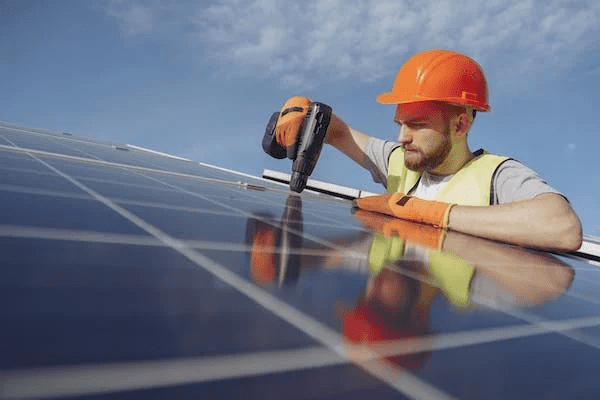
Factors That Affect How Much Solar Panels Cost
The overall cost of your solar panel installation depends on numerous interrelated factors.
Panel Type
The type of panels, as described above, impacts your overall price in a few ways. Monocrystalline panels tend to be more expensive on a per-panel basis.
On the other hand, you’ll need more polycrystalline panels (and installation space) to generate the same amount of electricity.
Panel Brand and Quality
Higher-quality solar panels typically cost more. That said, there’s not much price variation for similar products from reputable manufacturers. When making your purchase decision, consider the brand’s reputation for quality, customer service, reputable third-party reviews, and warranty length.
Size, Weight, and Number of Panels
All things equal, more panels will mean more money. Solar panel efficiency and rated power output make a big difference. You’ll need fewer monocrystalline panels than polycrystalline to achieve the same electricity production output. Adding more panels increases the system’s surface area, weight — and, typically, the overall price.
Start by determining how much electricity you need your solar panel array to generate and ensure your roof has the surface area and structural integrity to support enough panels to meet your requirements.
Then you can make an informed purchase decision that’s not just based on sticker price.
Permits and Interconnection
Depending on where you live, your initial costs may include acquiring the necessary permits for permanent solar installations. In addition, if you opt for a grid-tied solar power system going off-grid, you’ll likely have to pay fees for interconnection with your utility company.
Location
Solar power system and installation costs largely depend on where you live. State laws and state markets impact the costs you can face. How many hours of peak sunlight your house receives plays a crucial part in the system size you require.
In addition, rates for licensed installation professionals vary significantly from state to state.
Roof Characteristics
If your roof can’t support the weight of the panels required, part of your installation costs may include building additional supports to ensure your home’s structural integrity.
The pitch angles of your roof can also impact installation difficulty and increase your professional labor costs.
Labor
Labor costs vary by state — or even locality — based on everything from labor laws to the demand for workers where you live. Labor is among the most variable costs for solar installation. A location with more solar installers or less stringent labor laws may reduce the cost of your installation. The only time labor costs might not be a consideration is if you opt for portable solar panels or make the challenging decision to install the solar panels and balance of system yourself.
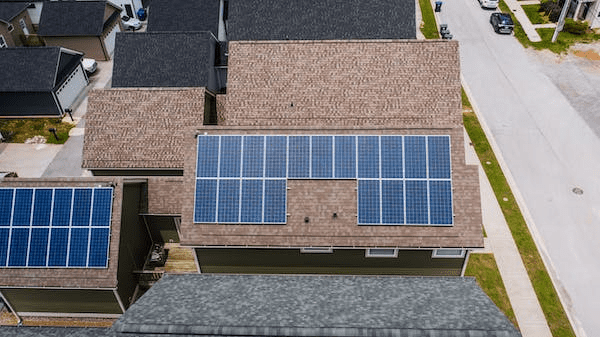
How Much Does It Cost to Install Solar Panels?
Your installation cost comes down to all of the above factors plus other specifics of the market where you live. Even before you purchase the system, installation costs can involve getting professional advice to accurately size your solar array and how much weight your roof can bear without reinforcement.
Each project is different, and understanding the averages can only help set your baseline expectations. No matter what size or type of solar solution you end up purchasing, it requires a substantial investment — albeit one that can pay off in the long run.
Do your due diligence before hiring any installer. Check their business reviews on Google, Yelp, and other third-party customer review sites. Interview them in person before committing to anything.
Don’t skimp. Without professional installation, it’s unlikely you’ll get the most out of your investment in solar power — and you may end up paying a lot more money in the long run.
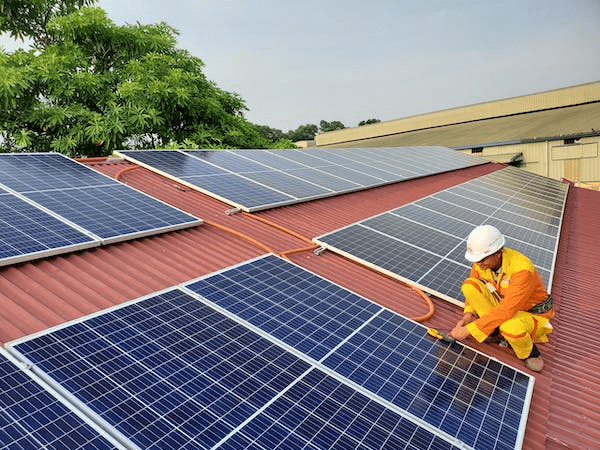
How Does Solar Panel Installation Work?
The following is a general guide for installing rigid solar panels in a rooftop array.
1. Choosing and Ordering Your Solar Equipment
You will begin by choosing the solar power system you want for your home. The selection process will include an assessment of your home and your overall energy consumption and needs.
2. Site Visit
Before you get an overall estimate, your installation professionals will visit your home. They’ll assess the roof, the proper placement and angles to maximize direct sunlight, and the number of panels needed to meet your needs.
3. Permitting and Documentation
Reputable installers will help you complete the paperwork you need to get permits in place for construction. They will also help you determine what you need to apply for the federal solar tax credit.
4. Installing the Panel System
Plan on one to three days for the installation, depending on the size and difficulty of the project. They will install the panels, along with your solar batteries, inverter and additional balance of system equipment, ensure everything operates effectively and efficiently.
5. Interconnection and Approvals
If you decide to connect to the local electric grid, a reputable installer can help you with the connection and permit approvals from municipal authorities. If you go off-grid, the final connections to get you up and running occur here. Local inspectors and utility representatives may have to inspect and approve the work.
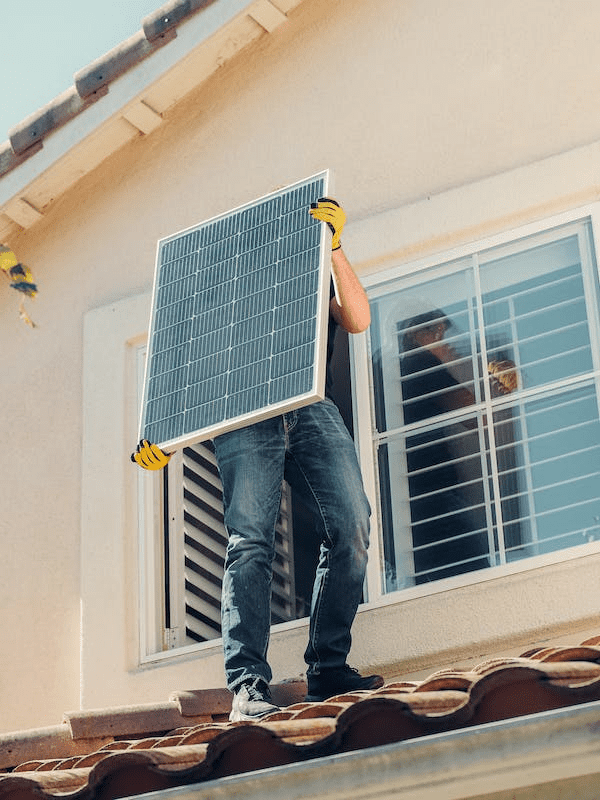
How Can I Pay for Solar Panels?
A solar power system is a significant investment. It takes between eight and nine years to recoup that investment entirely — this is sometimes the “solar payback period.” There are different ways to pay for this, with manufacturers looking to work with you to give you the system you need.
Cash
If you can afford to pay for your solar power system upfront, there may be benefits to doing so. The cost of solar has come down significantly in recent years, so more people than ever can afford to pay the entire cost upfront.
Solar Loans
Most people finance their solar power purchases. Loans are available to manage this from manufacturers and banks specializing in solar power loans.
Manufacturer Financing
Many reputable solar power system manufacturers either provide their own financing programs or work with third-party lenders to give you the option to pay for your system over time.
Solar Leases or Power Purchase Agreements (PPA)
In a solar power purchase agreement, you agree to host equipment that someone else purchases to place on your property. You then agree to purchase your electric power from the person or company that owns the equipment. The result can be inexpensive electric power for your home without requiring you to invest in the equipment yourself.
Solar Rebates and Incentives
The federal government offers tax credits for purchasing solar power systems as an incentive toward shifting consumers to renewable energy sources. State and local programs may also be available to you. These programs work together to help incentivize your decision to go solar.
Federal Solar Tax Credit
You can get a 30% tax credit for home solar installations through the Federal Tax Credit for Solar Voltaics. It allows you to claim up to 30% of the cost of equipment and installation. While the up-front cost remains substantial, this credit can help mitigate some of those costs and push you closer to the point where you start to gain more value from your investment than you put into it.
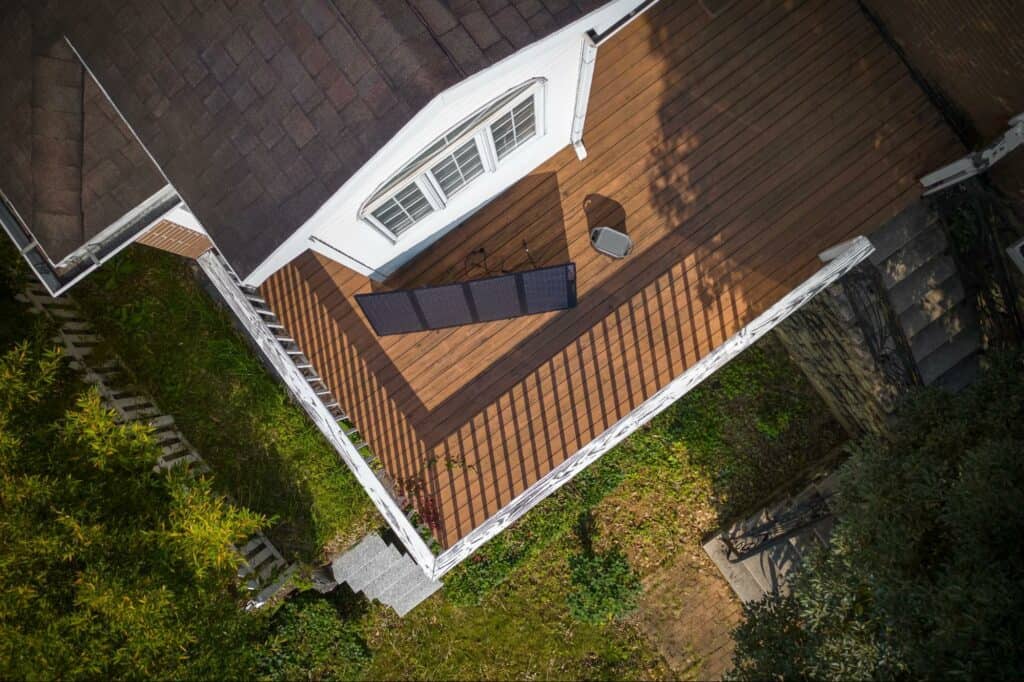
Final Thoughts
A home solar power system is a significant investment but a worthy one. Not only will you be doing your part to reduce your carbon footprint, but you can also save substantially on your long-term energy expenditures.
In the long term, the up-front cost of switching to clean, renewable solar panels becomes not only bearable but also worth the expense.
EcoFlow offers a wide range of solar power solutions — including a whole home generator — and the most efficient consumer solar panels on the market.
Visit EcoFlow to learn more today.
